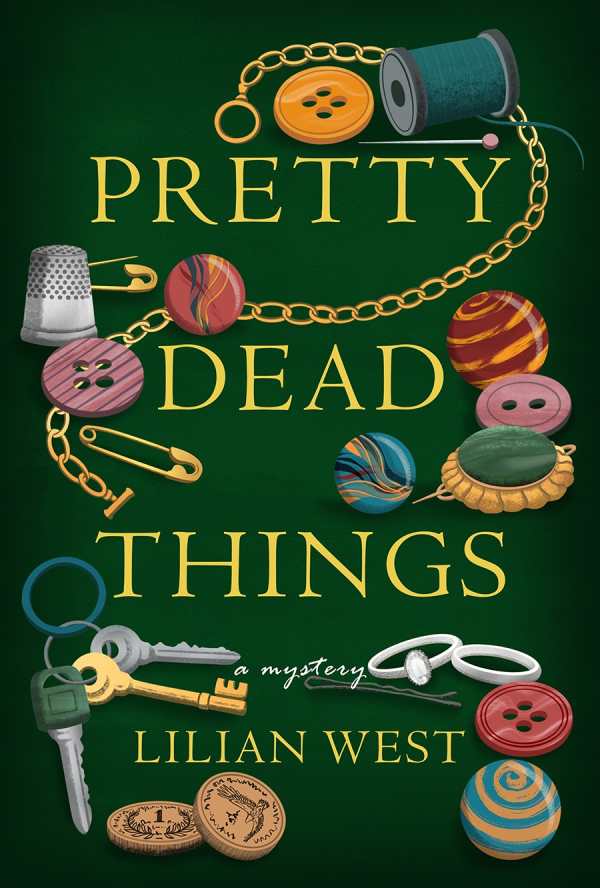Pretty Dead Things
In Lilian West’s mystery novel Pretty Dead Things, a bride-to-be works to solve a peculiar cold case buried and forgotten about for decades.
Newly engaged Cora relocates to Hickory Falls, the small town where her fiancé grew up. At an estate sale, she purchases a jar of trinkets containing two wedding rings. Determined to return the rings to their owners, Cora embarks on an investigation that leads her to one of the town’s most prominent families, uncovering a mystery dating back seventy years. In 1953, Clarity had a connection with a married man who left his life to build a new one with her. Their relationship began on a high note but soon unraveled; Clarity disappeared without a trace.
With vibrant descriptions, as of “white wooden folding chairs, four on each side of a narrow grass strip leading up to the oak tree,” the novel is atmospheric. Its dual timelines enrich the story, bridging the connection between the past and the present. Cora’s storyline is the more limited of the two: details about her relationships are sidelined, as is the history of her fiancé’s family in the town, despite its significance to Cora and her story. Accounts of Cora experiencing a tornado for the first time are drawn out and act as fillers in between chapters. But in the past, Clarity’s story is told with full transparency, with revelations about the affair, the feelings of the married man’s daughters, and why the disappearance was swept under the rug. Occasional plot twists keep the suspense high until the final moments.
Pretty Dead Things is an exciting mystery novel in which a family’s secrets are exposed and a small town’s hidden truth comes to light.
Reviewed by
Danica Morris
Disclosure: This article is not an endorsement, but a review. The publisher of this book provided free copies of the book to have their book reviewed by a professional reviewer. No fee was paid by the publisher for this review. Foreword Reviews only recommends books that we love. Foreword Magazine, Inc. is disclosing this in accordance with the Federal Trade Commission’s 16 CFR, Part 255.

